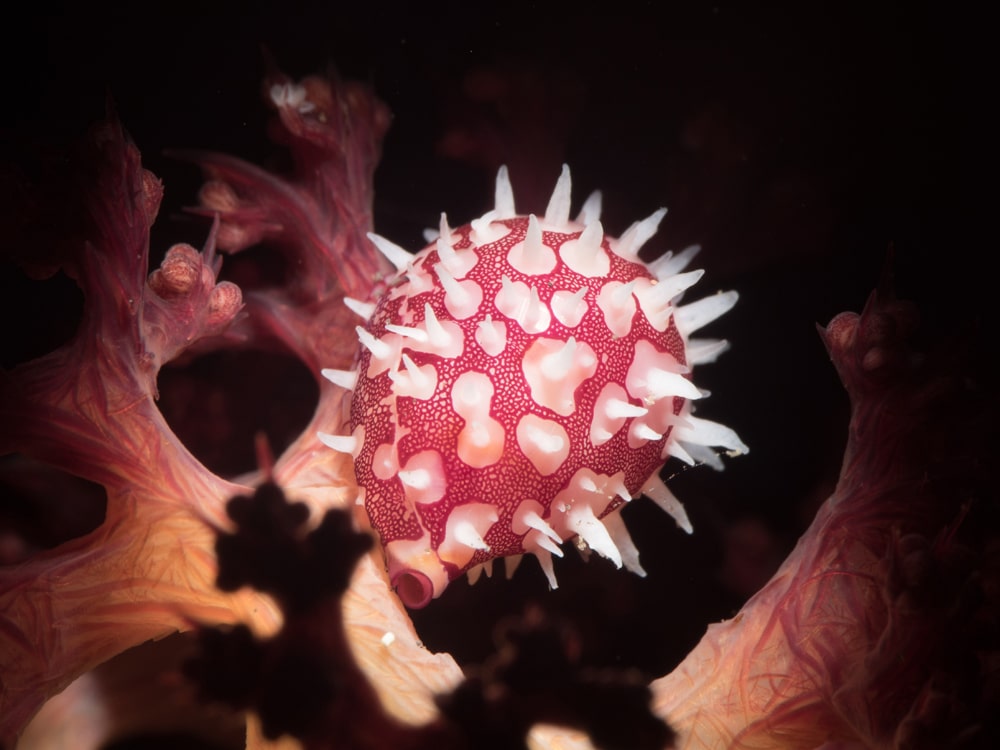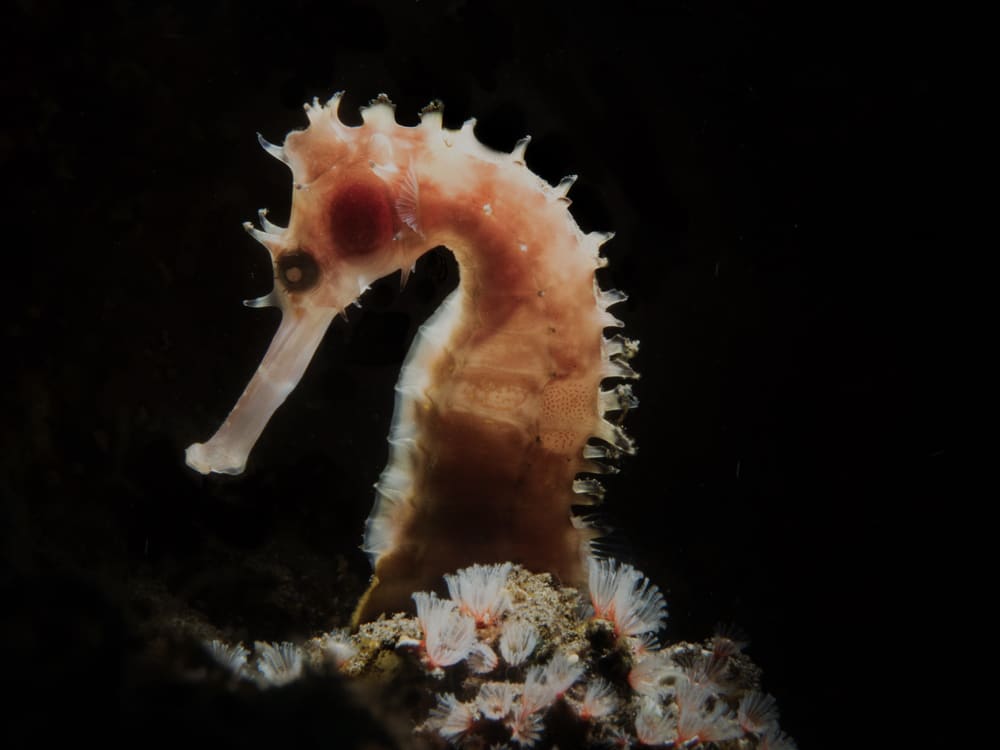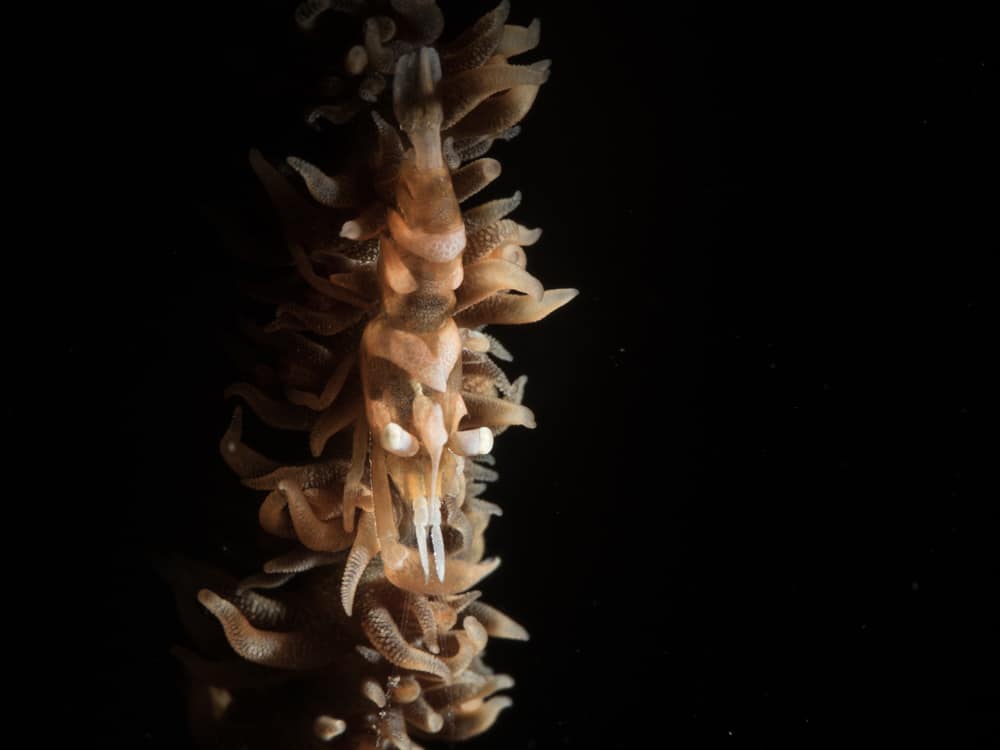News
How social media changed the way that I photograph underwater

Have you ever considered using social media as a method of learning underwater photography or finessing the way you shoot? If you haven’t considered it before, it may be interesting for you to learn that many people are online and doing it right now.
If tools like Facebook, Instagram and photography communities aren’t on your radar, it could be time to get online and start reaping the benefits that come with having a connection to a diverse and international community. It’s free to access, always available and you will gain visibility of all different styles, tastes and experience levels from oceans across the world!
The underwater photography community online is huge and constantly growing. If your first reaction to reading all about social media is to roll your eyes or to dismiss the online realm as the playground of millennials, hear me out!
There are two real benefits that come with using social media platforms to improve your photography. The first? It expands your mind to what’s possible. The portfolios of a vast array of photographers are now at the tip of your fingers, which is incredibly inspiring. Exploring the work of others can motivate you to ‘set the bar higher’ and immediately exposes you to new techniques and ways of thinking.
The second benefit is the feedback you can receive from members of your online community. I actively participate in Facebook communities such as ‘Wetpixel underwater photography’ (they have an excellent forum on their website) and ‘Marine Pixels – Underwater Photography’. Both of these communities are fantastic and allow members to request feedback on their images while viewing content from other contributors. The feedback is often positive and constructive which has allowed me to view my images from a new perspective and grow.
If you’re after something more specific, there are communities on Facebook catering to different subjects and different photography techniques. This can include anything from groups of people whose passion is blackwater diving, through to people shooting specifically using fluorescent filters… and everything in between. There really is something for everyone.
Being a macro enthusiast myself, I enjoy participating in ‘Underwater Macro Photographers’ and ‘International group of underwater macro enthusiasts’. I spend hours perusing images on underwater photography communities and connecting with other enthusiasts. Although I don’t always comment on each post individually or directly speak with the contributor, I enjoy working out what I like about each shot and what I would have done differently if it were my photograph. I’ve found that reviewing and critiquing images from other photographers has trained me to approach my own technique analytically. This has noticeably changed how I shoot underwater and edit my images.
In my experience, there is a generosity of knowledge on these communities which makes them incredibly collaborative and interactive. If you have a question, you can ask a knowledgeable group for help and advice on an issue you’ve having, what gear you need or to talk through and plan an upcoming project. This takes the guess work out of your photography and allows you to grow and learn from one-another. Information sharing and utilizing the collective experience is a quality of these groups and communities that keeps me coming back time and time again.
If the idea of participating in a formal community is intimidating, Instagram can be a great first step. If you’re not familiar with Instagram, it is a social media app that is designed for the publication and sharing of images specifically. There is an established underwater photography community contributing to Instagram and it’s easy to get involved!
In my opinion, Instagram has the largest volume and variety of underwater photography content available on any social media app. I believe this is because anyone, anywhere can contribute and the search tool, based on hashtags, is incredibly powerful. Because of this Instagram is a great resource for discovering new techniques and approaches to underwater photography. Like Facebook, you can use Instagram to connect with other photographers, follow trending techniques and receive feedback on your images. In fact, identifying and following specific tends is made easier on Instagram, as the search tool is more powerful than that of Facebook or similar social media apps.
Outside of your typical social media platforms are dedicated underwater photography websites and forums you should check out. Scubashooters is a great example of an online community where amateur and professional photographers come together to share images through the photographer portal. Additionally, the website has a forum where members can discuss underwater photography, diving destinations and scuba diving as a hobby. These websites open up your eyes to new places to shoot, new subjects to find, new ways of shooting and new people to collaborate with. As it’s a dedicated website, you will find that content is always relevant to the industry and is moderated to ensure that the community remains positive and constructive. Again, through viewing portfolios and popular images, it’s easy to identify current trends, new techniques and to better understand what makes a great image. The spirit of this website is really to collaborate, inspire and support.

While I’ve only discussed a handful of my favourite social media apps and forums with you, I hope I’ve shown the benefit that social media can bring. This goes above and beyond simply sharing the incredible things you’ve seen underwater with your friends and family. Social media allows you to be inspired by talented photographers globally while actively seeking feedback on your own work. Collaboration and knowledge sharing on these communities not only helps you to grow as a photographer but supports the growth of others.
My final advice to you is to research widely, see what’s available online, try a variety of social media applications or websites and get involved. Find a community or communities that you feel comfortable with and go at your own pace. I hope you find inspiration and see first-hand how the how the exposure you gain, feedback you receive and relationships you form can change your perspective on the way you plan, shoot and edit your images.
Check out more of Miranda-Clare’s photos on Instagram @divingphotos or visit her website www.mirandaclare.com.
News
Book Review: Fire on Monroe Bravo by Fred Lockwood

Fire on Monroe Bravo is the latest book in the Jack Collier series by Fred Lockwood. Our story begins with our lead characters, Jack and Sandro, owners of Marine Salvage & Investigation Company, arriving on the Monroe Bravo Oil & Gas Platform in the North Sea. Having secured a contract for their vessel the MV Stavanger to act as support ship to the platform for TransGlobal Oil, our protagonists are on a celebratory visit.
However almost as soon as they arrive a series of explosions rock the platform, causing huge damage, loss of life and the very real danger of a massive human, ecological and financial disaster.

As the danger mounts for both our heroes and the surviving workers, Jack and Sandro will have to escape the inferno, all while trying to save the platform and the men still trapped unable to help themselves.
The disaster sets the scene for the unfolding story lines following the fate of the platform and our main characters, the police investigation into a suspected terrorist act and the actions of TransGlobal Oil as they attempt to navigate the pubic outcry and financial repercussions.
In his eighth book, Fire on Monroe Bravo, Fred Lockwood delivers an explosive thriller, with plenty of above and in-water drama, and our heroes fighting for survival, what more can you ask for?
We thoroughly recommend this read and look forward to the next in the series. For more information about his book series, you can check out the reviews of his previous books here on Scubaverse.
- Title: Fire On Monroe Bravo
- Author: Fred Lockwood
- ISBN: 979-8325324536
Available in a paperback version and for Kindle from Amazon and book stores.
Blogs
Alonissos: The complete diving destination (Part 1)

In June we were incredibly fortunate to be invited to dive in Alonissos, a small Greek Island in the Sporades island chain located in the North Aegean Sea. While I have long been a big fan of the Greek Islands as a great holiday destination, I had not had the opportunity to do any diving on previous visits and Mike and I were extremely excited to see what Alonissos had to offer both above and below the surface!

The Sporades are easily accessible via the airport in Skiathos (the first island in the chain), which is served by Jet2 flights from all major UK airports from May through October. Numerous ferries and charter boats make island hopping from Skiathos Town a breeze. After an hour boat ride, the picturesque port of Patitiri was a wonderful introduction to Alonissos, where we were met by our gracious hosts Kostas of Albedo Travel and Dias of Alonissos Triton Dive Center. Mike and I were delighted to be staying at the Paradise Hotel, aptly named for its stunning views over the sea and great location for walking to the waterfront.

Alonissos is beautifully situated in the National Marine Park of Alonissos and the Northern Sporades, the largest marine protected area in Europe. The surrounding seas offer fabulous marine life, including incredibly rare species such as the Mediterranean monk seal. They boast deep walls covered in gorgonians and sponges, stunning topography with caverns, swimthroughs and pinnacles, and the first accessible ancient shipwreck from 500BC!

In locations where historical sites have been reported, the waters are largely restricted, but with collaboration between government, underwater archeologists and dive centres, incredible underwater museums are being created for a truly unique diving experience. Alonissos is home to the first of these, the Ancient Shipwreck of Peristera Accessible Underwater Archeological Site. The chance to dive into history (along with reports of healthy reef life and amazing underwater topography) meant Mike and I were keen to get in the water.

Our introduction to the diving around Alonissos was at the Agios Georgios Pinnacles, in the channel between Alonissos and Skopelos. This fantastic site was named “The Chimney,’ and proved to have a huge amount to see. We got to a decent depth here (over 25m), and marvelled at a colourful reef wall with a wonderful swim through whose rocky walls were absolutely covered with life. As well as brilliant topography there was no shortage of macro life here. We saw numerous nudibranchs, five different species in total. The second dive at Mourtias reef nearby was a shallower dive along a nice wall with lots of crevices. Several moray eels and grouper called this site home. We enjoyed looking in the crevices for lobster and smaller benthic life, such as cup corals and tunicates.

Our itinerary allowed us two dives a day with afternoons left to explore the island with our hire car and evenings to enjoy the famous Greek hospitality. This proved to be a lovely mix of in-water and land based diversions.

The next days diving to the Gorgonian Gardens and Triton’s Cave was to be even better! These two stunning sites are nothing short of fabulous. The Gorgonian Gardens was a deep wall near to the Agios Georgios islands. The ever-present currents in this deep channel meant that the sea life was amazing … the namesake Gorgonian sea fans dotted the wall at a depth of 30 to 50 meters, getting ever larger the deeper we went. Above 30m was by no means less beautiful, with sponges, corals, scorpionfish, moray eels and some rare and colourful nudibranchs.

The second shallower dive of the day was to Triton’s Cave or the Cavern of Skopelos, on the east side of that island. The spectacular rock formations had wild striations both above and below the water making a truly epic topography. The cavern entrance was at 14m, and big enough for a buddy pair, winding up to 6m and passing two beautiful windows out into the blue. Emerging from the cavern, the light at the shallower depths and the incredible rock formations made for a fantastic gentle swimming safety stop and we all surfaced by the boat with massive grins.

Check out our next blog :Alonissos: The complete diving destination (Part 2)” to hear about our amazing dive on the 2500 year old Peristera Wreck!
Thanks to:
Alonissos Triton Dive Center https://bestdivingingreece.com/
Albedo Travel https://alonissosholidays.com/activities/
Paradise Hotel https://paradise-hotel.gr/
Alonissos Municipality https://alonissos.gr/en/
-

 Blogs2 months ago
Blogs2 months agoDiving With… Nico, Ocean Earth Travels, Indonesia
-

 News1 month ago
News1 month agoMurex Bangka Announce New Oceanfront Cottages & Beachfront Dining
-

 Blogs2 months ago
Blogs2 months agoA new idea in freediving from RAID
-

 Marine Life & Conservation1 month ago
Marine Life & Conservation1 month agoIceland issue millionaire whale hunter a licence to murder 128 vulnerable fin whales
-

 Marine Life & Conservation2 months ago
Marine Life & Conservation2 months agoThe Shark Trust Great Shark Snapshot is back
-

 News3 months ago
News3 months agoCharting New Waters; NovoScuba Goes Global with the Launch of their Revolutionary Dive Training Agency!
-

 Gear News1 month ago
Gear News1 month agoNew Suunto Ocean – a dive computer and GPS sports watch in one for adventures below and above the surface
-

 Marine Life & Conservation Blogs2 months ago
Marine Life & Conservation Blogs2 months agoBook Review: Plankton

















